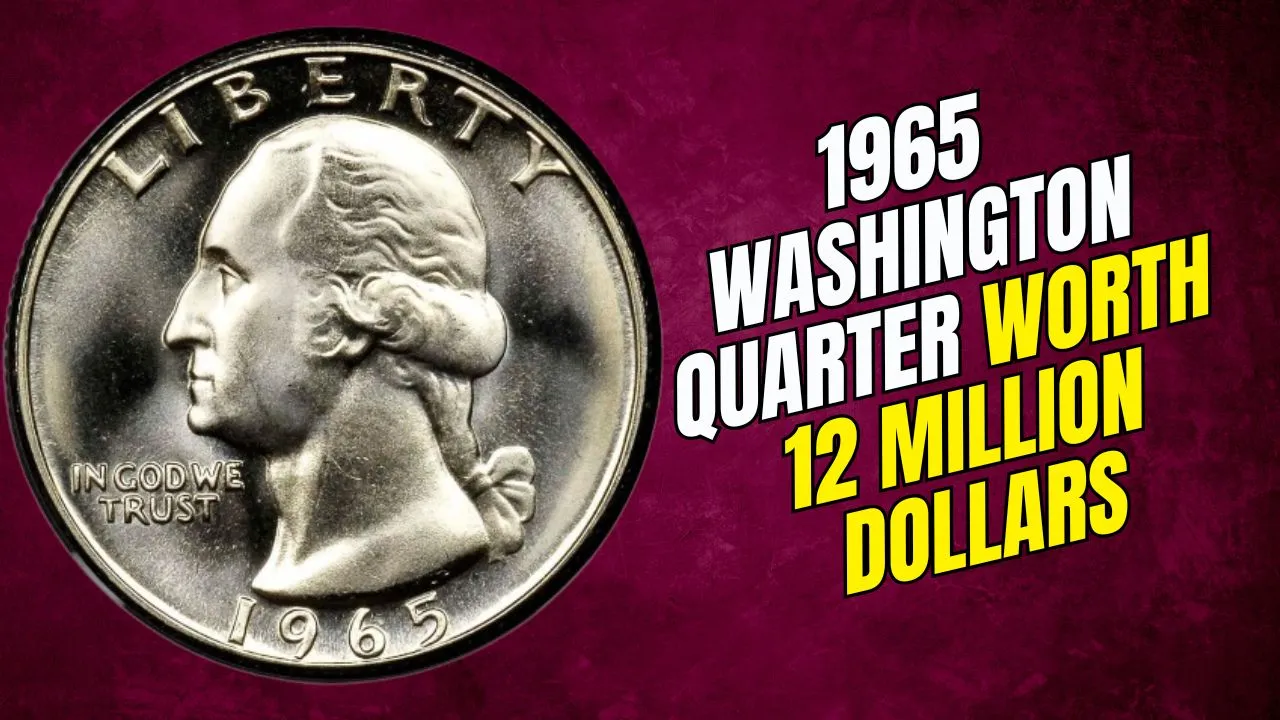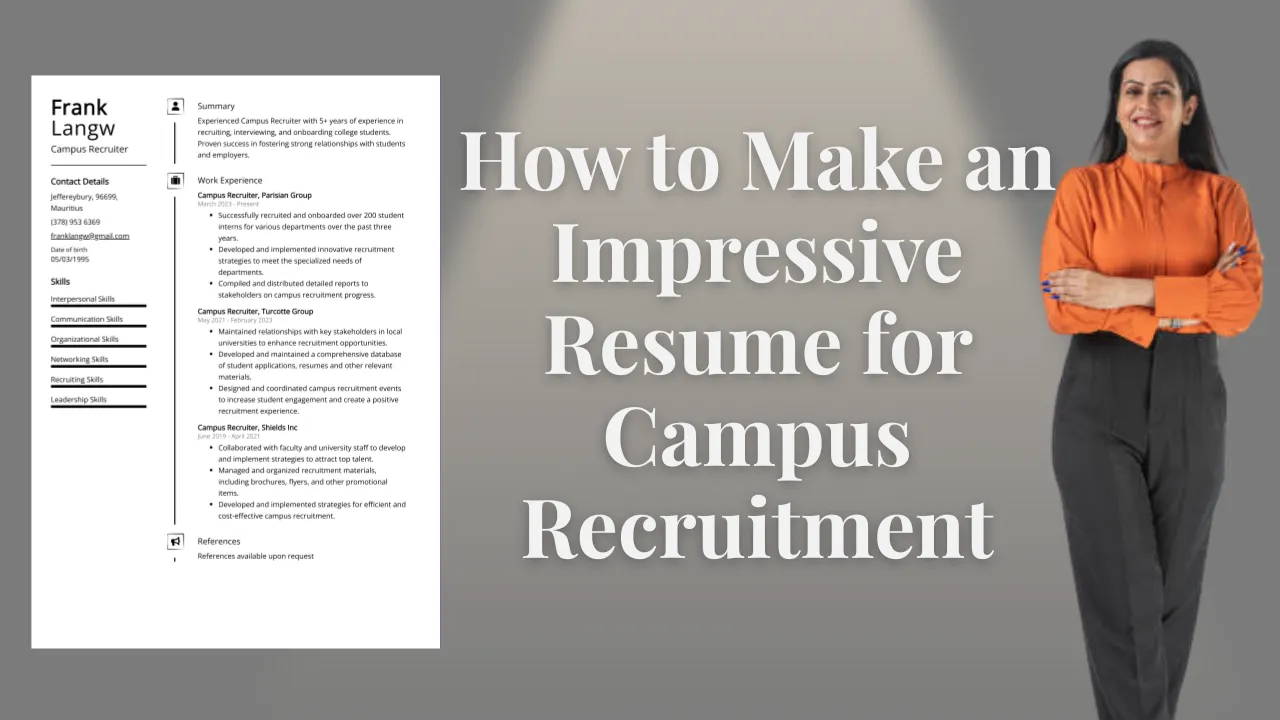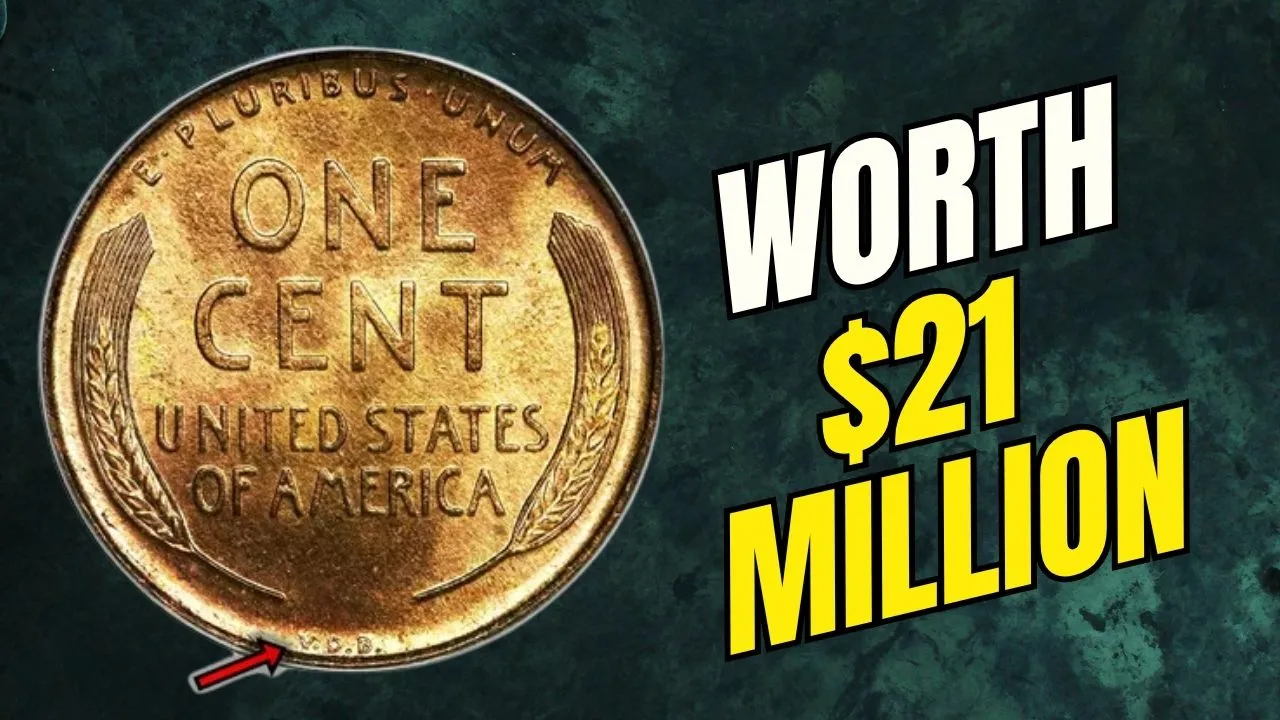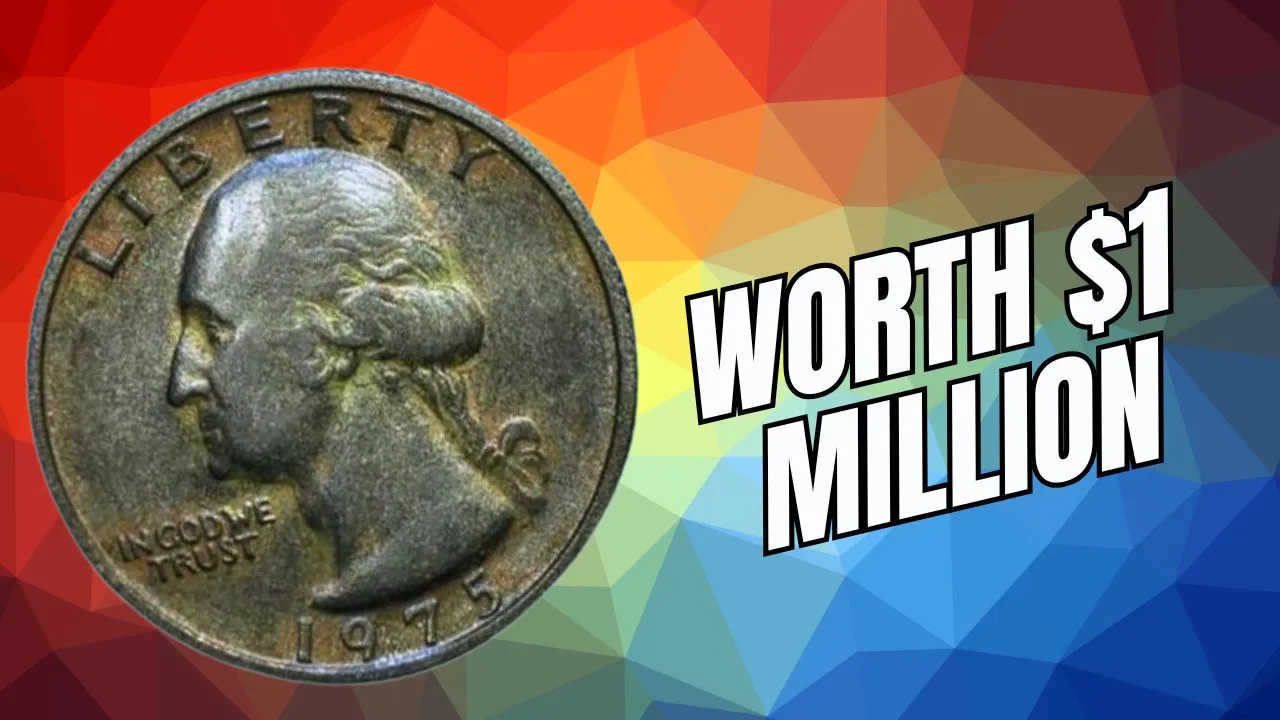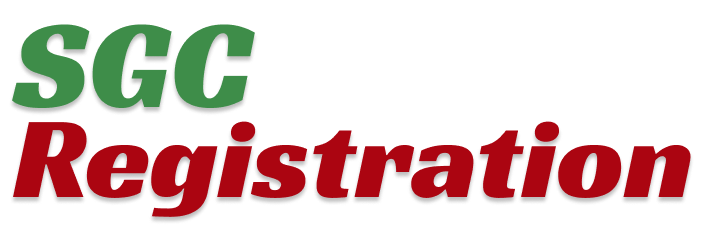1965 Washington Quarter: The 1965 Washington Quarter has recently captured the attention of collectors and curious coin holders across the country. This seemingly ordinary coin has gained legendary status due to rare minting errors and rumors of extraordinary auction values, including claims of a $12 million price tag. But what makes this quarter so special, and is it really worth millions?
This article unpacks everything you need to know about the 1965 Washington Quarter with no mint mark and a lettering error. From its historical background to the supposed $12 million value, we’ll explore the facts, the fiction, and the fine details collectors should know.
1965 Washington Quarter: Why It’s So Special
The 1965 Washington Quarter marks a significant turning point in U.S. coinage. This was the year the U.S. Mint transitioned from using 90% silver in its quarters to a copper-nickel clad composition due to rising silver costs. Additionally, to prevent coin hoarding, the Mint removed all mint marks from quarters between 1965 and 1967, making the absence of a mint mark standard for this period.
What makes this particular coin noteworthy is not just its year or lack of mint mark, but a rare lettering error that appears on some specimens. These errors have turned a common coin into a highly desirable collectible, sparking speculation, myths, and some very high estimates of its worth.
Overview Table
| Feature | Details |
| Coin Type | 1965 Washington Quarter |
| Composition | Copper-nickel clad (non-silver) |
| Mint Mark | None (normal for 1965–1967) |
| Error Type | Lettering Error (ghost, doubled, or misaligned letters) |
| Reported Max Value | $12 million (unverified/private claim) |
| Verified Auction Range | $40 to $7,200 |
| Key Areas to Inspect | “LIBERTY,” “IN GOD WE TRUST,” and date “1965” |
| Notable Auction Sales | MS67 (Doubled Die) sold for up to $7,200 |
Why Is the 1965 Washington Quarter So Special?
The historical importance of the 1965 Washington Quarter lies in its role during a transition in U.S. coinage. Silver prices had soared, making the production of silver coins too expensive. As a result, the Mint began using a copper-nickel blend, and to prevent the public from hoarding newly minted coins, mint marks were temporarily removed from the design.
What separates this quarter from the rest are rare anomalies, including lettering misprints. These errors are considered collectible by numismatists and can significantly raise a coin’s value — especially when combined with a high-grade condition certified by an expert grading service.
What Is the “Lettering Error” in the 1965 Quarter?
Some 1965 Washington Quarters have what collectors call a “lettering error.” These errors usually appear in the text on the obverse (front) side of the coin and include:
- Misaligned or doubled letters, particularly in “LIBERTY” or “IN GOD WE TRUST”
- Ghost lettering, where a faint outline of the text appears
- Blurry or uneven spacing caused by die damage or misalignment
These rare flaws may be the result of deterioration in the dies used to mint the coins or unintended engraving mistakes. Collectors value these unusual features, especially when they are clearly visible and appear on high-grade coins.
Can It Really Be Worth $12 Million?
The $12 million claim surrounding the 1965 Washington Quarter likely stems from speculation and viral stories rather than confirmed auction results. Although no public records confirm a sale at that price, rare versions of the coin have still sold for respectable amounts:
- A coin with a doubled die obverse in MS67 condition has fetched between $4,000 and $7,200.
- A broadstruck error coin in MS66 condition has sold for $500 to $1,200.
- A coin with a basic “no letter” error in circulated AU58 condition has sold for $40 to $150.
Coins rumored to be worth millions are usually speculative valuations from private collectors, and they rarely reflect real-world sales. Still, the right combination of rarity, condition, and market interest can drive prices significantly higher than face value.
Verified Auction Sales
To separate myth from fact, here are the actual verified auction results for different versions of the 1965 Washington Quarter:
| Grade | Error Type | Auction House | Price Range |
| MS67 | Doubled Die Obverse | Heritage Auctions | $4,000 – $7,200 |
| MS66 | Broadstruck Error | eBay / Private Sales | $500 – $1,200 |
| AU58 | No Lettering Error | Local Coin Auction | $40 – $150 |
Before assuming you own a fortune, it’s essential to have your coin examined by a professional.
How to Identify a 1965 Quarter Error Coin
If you suspect you might have a valuable 1965 Washington Quarter, here’s what to check:
- No Mint Mark: While normal for this year, combine it with other signs.
- Lettering Issues: Look for doubling, shadow effects, or misalignment in the wording.
- Die Errors: Check for off-center strikes or weak edges.
- Coin Weight: Silver quarters weigh about 6.25 grams, while clad versions weigh around 5.67 grams.
- Edge Flaws: Some error coins show flat rims or irregular reeding.
A magnifying glass, good lighting, and a digital scale can help with your first inspection. Still, confirmation from PCGS or NGC is crucial.
What Makes a Coin Worth Millions?
A 1965 Washington Quarter is unlikely to sell for millions, but some factors can significantly increase its value:
- Rarity: Unusual errors with very few known examples create demand.
- Grade: Coins rated MS66 or higher fetch premium prices.
- Authenticity: Grading from reputable services adds trust and marketability.
- Historic Timing: Coins minted during major transitions attract more attention.
- Public Interest: Viral stories and collector interest can temporarily boost value.
Even without a $12 million valuation, a valuable coin can bring in thousands when authenticated and sold correctly.
Common Myths Debunked
Let’s bust a few common misconceptions about the 1965 Washington Quarter:
| Myth | Reality |
| All 1965 quarters are rare | Millions were made. Only errors or high grades are valuable. |
| No mint mark means it’s valuable | Mint marks were intentionally removed between 1965–1967. |
| Any error makes it worth millions | Most error coins sell under $1,000. |
| Old means rare | Age alone doesn’t increase value. Rarity and condition do. |
Don’t fall for every story online — verify with trusted sources.
What to Do If You Have a 1965 Quarter
Here are steps to take if you believe your 1965 Washington Quarter might be valuable:
- Examine the Coin: Use a magnifier and proper lighting.
- Weigh It: Use a digital scale to check for silver composition.
- Identify Errors: Look for letter misprints, die flaws, or edge issues.
- Get a Professional Grade: Submit your coin to PCGS or NGC.
- Ask the Community: Join coin forums or Facebook groups and share photos.
Taking these steps can help confirm whether you own a rare and valuable piece.
Should You Invest in Error Coins?
Yes, but do your homework. Collecting and investing in error coins can be rewarding when done wisely. Focus on:
- Verified grading
- Rare and documented errors
- Coins with strong auction history
- Diversified investment — don’t rely on one coin
While not every coin will make headlines, a solid collection can hold value over time.
Final Thoughts: A Quarter Worth $12 Million?
No certified sale confirms the 1965 Washington Quarter has sold for $12 million, but the legend speaks to the power of curiosity and coin collecting. If you come across one with rare lettering errors or unusual features, it’s certainly worth getting checked.
Even if your quarter isn’t worth millions, turning 25 cents into a few thousand dollars is still an incredible return. Stay curious, keep learning, and who knows — your spare change might hold a fortune.
FAQs
Q1: Why does the 1965 Washington Quarter have no mint mark?
Between 1965 and 1967, mint marks were removed to prevent hoarding as silver was phased out. So, the absence of a mint mark is normal.
Q2: Is the 1965 Washington Quarter rare?
Not typically. Millions were made, but errors or silver planchets are rare and valuable.
Q3: What is the “Letter Error” in the 1965 quarter?
It refers to doubled or misaligned letters, especially in “LIBERTY” or “IN GOD WE TRUST,” due to minting flaws.
Q4: How do I know if my 1965 quarter is valuable?
Check for errors, weigh it for silver, and get it graded by PCGS or NGC for confirmation.
Q5: Can I sell my quarter online?
Yes, platforms like eBay or Heritage Auctions are common, but professional grading helps boost credibility and price.
